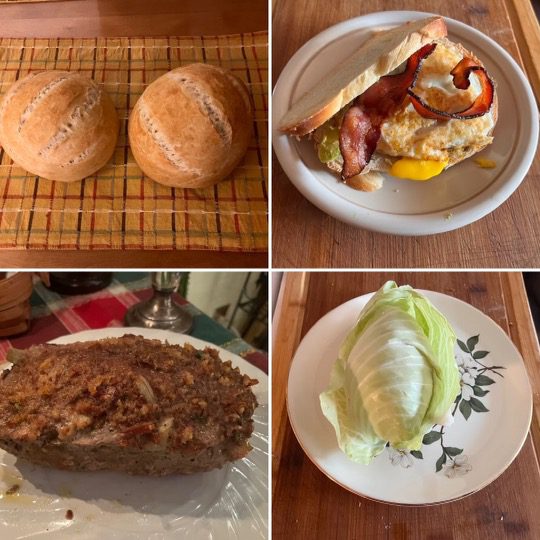In a previous post, I shared what it took to heal my eosinophilic esophagitis.
In this post, I share a few tasty and healthy foods, and a recipe for organic bread.
I love to bake, and my husband Jon loves to cook. And we both love that I healed my eosinophilic eosinophilic esophagitis (EoE) when I created my own diet — the Miriam Diet — and eliminated all preservatives, additives, food coloring, steroids, antibiotics, pesticides and insecticides. We read every food label very carefully. We no longer eat in restaurants or fast foods.
We create meals with organic grass-fed beef, bacon, and chicken and pork sausage that are free from preservatives, additives, etc. Until we start planting again in the spring for our summer vegetable garden, I can only eat green and red cabbage. They have a natural enzyme that keeps pests and insects at bay. I also eat red and yellow onions, and avocados.
I recently added organic bread flour to my diet to bake bread and pizza dough free of chemicals.
Here are some of the clean foods that do not harm my esophagus and do not cause food impaction. If you have EoE, these foods might be better and healthier for you.
- Melted dark chocolate chips and almond butter smeared on a slice of organic bread. It’s a great snack. Read the labels and make sure they don’t contain preservatives, etc.
- An organic egg, bacon, and avocado sandwich. Delicious for breakfast or any meal.
- Cabbage roll stuffed with leftover chicken, organic beans, and avocado — so tasty and filling.
- Organic meatloaf — we make ours with organic beef, pork, turkey, or a mix of two or all three. Adapt it to your own meatloaf recipe and use your favorite spices. We love cilantro, oregano, cumin, onions, garlic, paprika, sea salt, and pepper.
- Organic bread. I found this recipe on YouTube but tweaked it.
5 cups of organic flour
1 tbsp of active organic yeast
2 tsp of sea salt
2 1/4 cups of hot water
1. Whisk all dry ingredients in a bowl.
2. Add 2 1/4 cups of hot water slowly as you mix the ingredients with a spatula.
3. Knead the dough with your hands. It will be sticky at first.
4. Form the dough into a ball and place it in the bowl. Cover the bowl with plastic wrap, keep it in a dark place, and let it rise. (I put the dough in my microwave). Let it rise for 2 hours. It should double in size.
5. Knead the dough again until it’s pretty smooth and put it back in the bowl to rise for another 30 minutes.
Preheat the oven at 450°F.
6. Knead the bread again and form it into a semi-round shape. I cut the dough into two semi-round shapes to make two loafs. Slash the top of the bread dough with a knife a couple of times.
7. Place the dough in an enamel Dutch oven pot. I use a separate Dutch oven pot for each loaf. If you don’t have an enamel Dutch oven pot, place a piece of parchment paper in the pot so the bread doesn’t stick.
8. Cover the pots and bake in the oven for 30 – 40 minutes. Enjoy.
Everyone’s EoE journey is different. Treatment and diet changes that work for some won’t work for others. For some, a change in diet requires discipline and a lifestyle change to some extent. I never imagined eliminating so many foods due to the harmful ingredients they contain. They are detrimental to my esophagus and are the cause of life-threatening food impactions. But I’m so glad I have eliminated them from my sources of nutrition.
In a future post, I will share how we prepare and pack food and meals when we travel, how we get creative when we make our own food on the road, in hotels, while hiking in national parks, and while running ultramarathons, as well as how family members support and accommodate my diet needs and requirements when we gather together.








